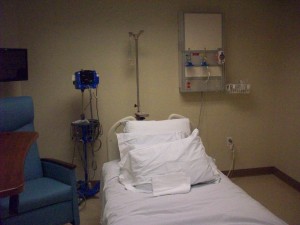Faculty use technologically advanced spaces to benefit students
As Elon’s campus as a whole is learning how to use new technologies, our classrooms are getting smarter,
too. Many are now equipped with the technology to enhance the learning experience, and some faculty members on campus are utilizing these advancements to improve the communication of feedback and expand learning beyond the classroom. Here is what those professors had to say about using technologically advanced classrooms.
Technology benefitting language students
Dr. Scott Windham, a professor in the German department, has been using the Language Media Center in Carlton. The Center is a computer lab that includes three screens, headphones and microphones.
With access to this technology, Dr. Windham can present on multiple screens to compare information, and he can use programs such as Skype and ooVoo to improve his students’ language proficiency.
“Displaying different sources on different screens allows for comparison of multiple images, or including instructions on one screen and an image on another screen,” Dr. Windham said. “The ability to use ooVoo, Skype, or Google Hangouts is useful for language courses because my students are able to speak to students in Germany during class.”
Dr. Windham sees the impact of having such an advanced space to promote higher learning in his classroom, but he does acknowledge these spaces aren’t perfect.
“We need other classrooms like this,” Dr. Windham said. “However, the fixed seating in this particular classroom is a terrible idea. The best sort of seating is moveable, as in the Teaching & Learning Pavilion or in Koury Business 242. The desks in those classrooms can be arranged in many different types of configurations to support many different types of instruction. In a very real way, seating is more important than technology.”
Technology benefitting physical therapy students
Dr. Daryl Lawson, a professor in the physical therapy education department, is thankful for the resources in the new Gerald L. Francis Center. Dr. Lawson utilizes these advancements in the Francis Center for two specific classes: orthopedics and wound care.
For his orthopedics class, the Francis Center has simulation exams, where students can perform exams with patients in simulation exam rooms, while being monitored through video and audio from the observation room by the instructor. The instructor can provide instruction during an exam over an intercom system.
Dr. Lawson explained how these rooms allow him to be an effective teacher and ultimately help his students in their learning.
“I can watch students as they are doing evaluations, and students get immediate feedback [through microphone communication and video playback] after the exam is done,” Dr. Lawson said. “Sometimes, watching you do something can help you correct mistakes better.”
Dr. Lawson remembers the days of practical exams before this kind of technology. He believes these new technologies are better for instruction.
“In the past, we would have to sit down with students after practical exams,” Dr. Lawson said. “ They would do the exam and then we would discuss it verbally. Now, you can look at what you’re doing and get that visual feedback. That is more powerful for correcting mistakes and reinforcing the positive parts of the evaluation.”
The other course Dr. Lawson uses the Francis Center’s technologies for is for wound class. The course, which talks about treating difficult wounds, was not as effective without actual wounds to examine.
Now, there is telemedicine, which allows students to Skype or use other telemedicine technologies with actual hospitals around the country to observe real-time wound treatment. Dr. Lawson says the real time interaction has been beneficial for his students.
“We partnered with a clinic 2600 miles away to see actual wounds being treated,” Dr. Lawson said. “Students were able to ask questions to patients and clinicians in real-time, which is really cool.”
This is a huge step up for wound care courses of the past, Dr. Lawson said. Telemedicine has given his courses more opportunities to see wounds in real time, something that was virtually impossible years before.
“Before, we just didn’t have access to those wounds before telemedicine,” he said. “Now, we can go into big wound centers and look at them and talk with the experts. Before, it was limited to observation of the student in various clinics.”
MORE: Read more about Dr. Lawson’s work with telemedicine
If you’re interested in utilizing a technologically advanced space on campus for your course, contact Teaching and Learning Technologies at 336.278.5006 or tlt@elon.edu.


 Follow
Follow

